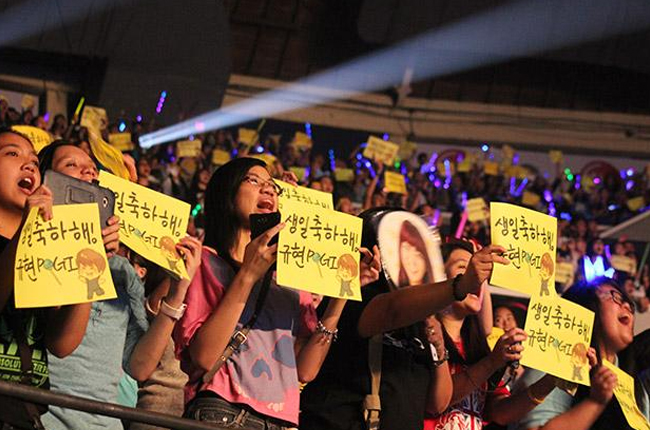MANILA, Philippines – A new platform called FanFlare will be launching in the Philippines with a mission to empower fan communities and act as a cultural bridge between Filipino and Korean pop culture. FanFlare is a community-driven fan support app that enables passionate local fan clubs to organize projects for their favorite artists in a transparent way – without the platform itself collecting any funds. By putting fans in the driver’s seat, FanFlare helps grassroots organizers rally fellow fans and directly access high-quality advertising placements for their idols, both locally and abroad, turning fan passion into tangible support.
FanFlare’s approach is unique in today’s fan project scene. Unlike other crowdfunding platforms that focus mainly on overseas ad placements, FanFlare is taking a Philippines-first strategy. This means Filipino fan groups can more easily mount campaigns for local impact – such as billboards along EDSA or events in local cafes – while still reaching global milestones. In effect, the platform is helping to “bring Korea” to the Philippines: it channels the enthusiasm for Korean idols and culture into homegrown fan initiatives, effectively importing a piece of the Korean fan experience to Filipino soil and vice versa. It’s not just an app launch; it’s being framed as a cultural bridge and a tool of empowerment for fans who have long loved K-pop and K-drama from afar. By enabling Filipino fans to showcase their idol support in visible ways, FanFlare contributes to the Korean Wave’s local momentum, almost like exporting a slice of Korean fan culture into the Philippines’ pop scene.
Empowering fan communities through transparency. One of FanFlare’s hallmark features is transparency in how projects are run. The platform does not handle fan-raised funds directly – a deliberate choice to build trust. Instead, it connects fan organizers with partners for placements, so contributions go straight to the intended project. This setup addresses a common concern in fan-driven fundraisers about where the money goes. With FanFlare, everything is open: fellow fans can see what has been pledged and exactly what it’s paying for. The result is a system where fans feel safer and more enthusiastic contributing to support their idols, knowing there’s accountability at each step.
Mentorship from Korean innovators is guiding FanFlare’s Philippine team. The startup is backed by mentorship from South Korea’s Hashpurple and KDOL, names that carry weight in the K-pop fan community. Hashpurple – the Seoul-based tech company that operates the global K-pop fandom app KDOL – has plenty of experience in fan-driven projects. Through KDOL, for instance, K-pop fans worldwide participate in voting competitions where top-ranking idols receive special rewards like subway billboard ads or even LED displays in iconic locations. That expertise is now being shared with FanFlare. “We want to bring the proven playbook of K-pop fan engagement to the Philippines, but adapted for the local fan culture,” a representative from FanFlare explained. With Korean mentors who have overseen successful fan advertisement campaigns (from Seoul subways to New York’s Times Square), FanFlare’s team is equipped to help Filipino fans achieve similar feats. The platform provides mentorship and logistical support to fan club leaders, guiding them on how to plan campaigns, negotiate with advertisers, and maximize social media buzz – effectively leveling up the fan-organizing skills of local groups.
Real-world fan campaigns illustrate the kind of impact FanFlare aims to amplify. In South Korea, it has become common for fans to celebrate their favorite idols’ birthdays or milestones by lighting up LED billboards and subway stations with messages and photos. These fan-funded projects can cost thousands of dollars, yet dedicated supporters make them happen regularly. Now, Filipino fans are beginning to do the same. Just this February, fans of P-pop girl group BINI pulled off an unprecedented project: a video billboard ad at Hapjeong Station in Seoul, South Korea, to honor member Maloi. The sight of a Filipina idol gracing a Seoul subway screen – funded by Filipino fan contributions – is a testament to how local fandoms are stepping onto the global stage. K-pop fans in the Philippines have likewise organized projects such as LED billboards in Manila for Korean artists’ birthdays and charity drives under their idols’ names. However, these efforts have often been confined to Facebook groups and ad-hoc coordination. FanFlare intends to streamline such fan-driven campaigns. Through the app, a small fan club in Cebu could get the guidance and platform it needs to rally nationwide support for, say, a birthday ad in a major Manila mall or even a group greeting on a Seoul digital billboard. By showcasing these success stories and making it easier to replicate them, FanFlare helps fan communities visualize the impact they can have.
Crucially, FanFlare’s Philippine-first ethos means it isn’t just about sending Filipino-funded ads to Korea or Times Square; it’s also about elevating fan culture within the Philippines. The platform emphasizes that local fan organizers can achieve big outcomes without always relying on international partners. For example, FanFlare can help a local K-drama fan club partner with a Philippine cinema chain for a special screening event, or assist a K-pop fanbase in securing a prime LED billboard in Makati for a fandom message. These are the kinds of high-quality placements and events that might have seemed out of reach before, but with a coordinated platform and expert mentorship, Filipino fans can pull them off. This not only fuels the fandom experience but also boosts related local industries (marketing, events, etc.), essentially bridging economies and cultures. Filipino businesses get to tap into the K-pop craze through fan-initiated campaigns, while Korean content gains even more visibility in the Philippines – a win-win that “sells” Korean culture in the best sense, by celebrating it publicly and collaboratively.
Early user feedback on FanFlare’s test group has been enthusiastic. Tech observers note that this is the first fan platform of its kind tailored for the Philippines, in contrast to existing apps that largely cater to voting or fundraising for projects abroad. Media analysts see it as part of a larger trend of localization of the Hallyu (Korean Wave) phenomenon – empowering local fans to not just consume content but actively promote and participate in the narrative of that content’s success. FanFlare’s team, on the other hand, is focused on building trust one campaign at a time. Success stories will be key: the more projects that successfully reach their goals via the app, the more momentum will build among fan communities. The company is already planning partnerships with local advertisers and Korean entertainment agencies to possibly co-sponsor some fan-led campaigns, which could further encourage fans to get on board.
As FanFlare kicks off its Philippine journey, its broader impact will be measured in how well it can fuse the collective spirit of Filipino fandoms with the polished playbook of Korean fan campaigns. If all goes well, we may soon see more Filipino-led ads celebrating Korean idols on EDSA’s giant LED screens, or Filipino pop idols appearing on Seoul’s billboards – visual reminders that fandom truly knows no borders. It’s a cultural exchange driven not by governments or corporations, but by fans themselves.




